Letter to the Editor: Cuomo’s Climate Plan Isn’t Serious, But Nuclear Still Isn’t the Answer

Indian Point power plant (photo: Governor's Office)
In an opinion piece by Leonard Rodberg and Herschel Specter, “Is Governor Cuomo Serious About Climate Change? Indian Point Decision Says No,” published March 2, the authors argue that the climate plan for New York is not serious because it cannot accomplish the desired reduction in greenhouse gas emissions. However, they claim, it is easy to make the plan serious by cancelling the planned closure of two nuclear power plants. Their arguments are the same as in their prior pro-nuclear opinion piece from last year, namely that enough renewable energy and the corresponding infrastructure is not being built and cannot be built.
In my letter to the editor that appeared in response to that piece I replied that nuclear is no solution because the waste has to be kept and managed in perpetuity and can do enormous damage if some of it escapes. The effort needed to maintain it should instead be going into renewables. This is still my opinion.
But I also agree with the statement that the Cuomo plan is not serious. In this respect the plan is in keeping with national policy consistently followed over the last 35 years. It is a policy clearly declared by the U.S. Senate in the period leading up to the Kyoto agreement in 1997. Kyoto was then not ratified; this was enough to make it irrelevant. Since then the rhetoric changed a few times but the essence did not.
Big business in the United States has been investing in fossil fuels ever since. It intends to reap the profits of these investments. It is also aware that the climate crisis, as it progresses, hits the competitors of the U.S. harder. So there is a practical consensus in this matter within big business, even if in other things there is not.
Of course in the end, and nobody knows where the tipping point is, all human life becomes impossible. But the consensus is that this tipping point is likely to be far away and the present policy is worth the risk. As a result, a plan to build up New York City’s flood defenses for $119 billion or to build a sea wall in the North Sea between Scotland and Norway for $500 billion is seriously discussed, while the Green New Deal is rejected out of hand as utopian and impossible.
Things being as they are, could Cuomo, pressed by New York public opinion, go against the grain and do more? I think he certainly could. He could forbid or at least heavily tax new fossil fuel installations; he could speed up energy-saving measures; he could incentivize solar panels; he could speed up building the planned large wind farm. Last but not least, he could make it perfectly clear that the federal government must be involved, and a national Green New Deal, as it has been proposed, is urgently needed.
Sincerely,
Adam Koranyi, retired professor at CUNY Lehman College
***
Have an op-ed idea or submission for Gotham Gazette? Email This email address is being protected from spambots. You need JavaScript enabled to view it.
Coronavirus In Our City: New York Must Mobilize Resources and Avoid Scapegoating
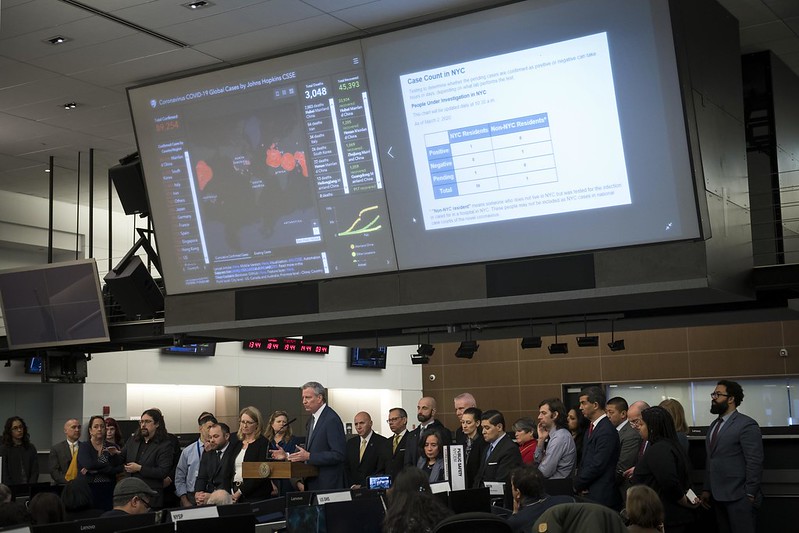
Coronavirus briefing by Mayor de Blasio & others (photo: Ed Reed/Mayor's Office)
With the first confirmed cases of the Wuhan coronavirus, COVID-19, in New York City, our communities are on high alert. We fear that New York’s Chinese community, where I live and work, is especially at risk. That is why we are prepared to leverage our culturally competent care model to bridge any gaps that may render our communities vulnerable.
I lead a non-profit health organization, SOMOS, that oversees the health delivery for nearly one million New Yorkers, mainly lower-income, and almost all immigrants like me. Our network includes over 300,000 Chinese patients in my neighborhood of Sunset Park, as well as neighborhoods in Lower Manhattan and Queens. We must prepare to meet the challenges of cases of infection now in New York.
In our backyard, over 100 possible cases are being examined on Long Island – mere miles from New York City. Rightfully, there is a reason for public concern, and we are already seeing the capability of this coronavirus to disrupt various aspects of our lives. The need to adopt best practices and to contain the virus - and mass hysteria - are critical.
In the last couple of days, the virus has pummeled the global financial market, caused countries to issue emergency declarations, and forced the cancellation of thousands of social and cultural gatherings. The virus has infected nearly 90,000 people, and over 3,000 deaths in at least 53 countries, including the first mortality in the United States, where over 75 known cases are reported.
Now is the time for government leaders to work closely with the community and family doctors who are the first line of defense in a public health crisis that hits vulnerable communities – especially those in immigrant communities who are typically isolated by culture, language, poverty, and customs.
Moreover, we must continue not to let fear rule our actions or scapegoat the Chinese and other Asian-American communities. With more panic and increased hysteria, there is a greater temptation to blame perceived outsiders. But when people play off stereotypes, it distracts from the actual risks and feeds into misinformation around the virus.
Let’s instead focus on the facts. Our community members must also understand that those who contract the coronavirus can recover unless they have other underlying health issues.
New Yorkers should follow precautions as they would during cold and flu season every year. But if you are feeling well and symptom-free, continue with your daily life per usual – go to work, run your errands, and spend time with your loved ones.
Likewise, good hygiene is imperative. Washing hands frequently and covering your mouth – with a tissue or your sleeve instead of your hand – when sneezing or coughing. Also, it is crucial to keep the home and surroundings clean and disinfected and to visit a local pharmacy or health care provider to get the flu shot for individuals who haven’t done so this year.
We must continue working together to educate and inform New Yorkers on symptoms to watch out for, ways to protect themselves and their loved ones, and what to do if there is a suspected case of infection.
Top symptoms include coughing, fever, and trouble breathing. Individuals experiencing these symptoms that have recently traveled to outbreak zones or had close contact with someone who recently visited outbreak zones should contact their healthcare provider immediately. Calling ahead and notifying providers of travel plans or symptoms after traveling are recommended best practices. Then, avoiding contact with others until medical professionals instruct otherwise.
Healthcare providers in Chinese communities and throughout New York City are ready to meet the challenges of the outbreak, but we cannot do it alone. We need cooperation from all our federal, state, and local partners to coordinate with health officials, healthcare networks, and community-based organizations to ensure we are doing everything to prevent the spread of the virus effectively.
If we all prepare, educate, and remain calm and vigilant to the signs and symptoms, we can avoid panic – and, most of all, ensure that New Yorkers stay healthy.
***
Dr. Henry Chen, MD, is President of SOMOS, a non-profit, physician-led network of over 2,500 health care providers serving over 700,000 Medicaid beneficiaries in New York City. On Twitter @SOMOScare.
***
Have an op-ed idea or submission for Gotham Gazette? Email This email address is being protected from spambots. You need JavaScript enabled to view it.
Coronavirus, Criminal Justice and Civil Liberties
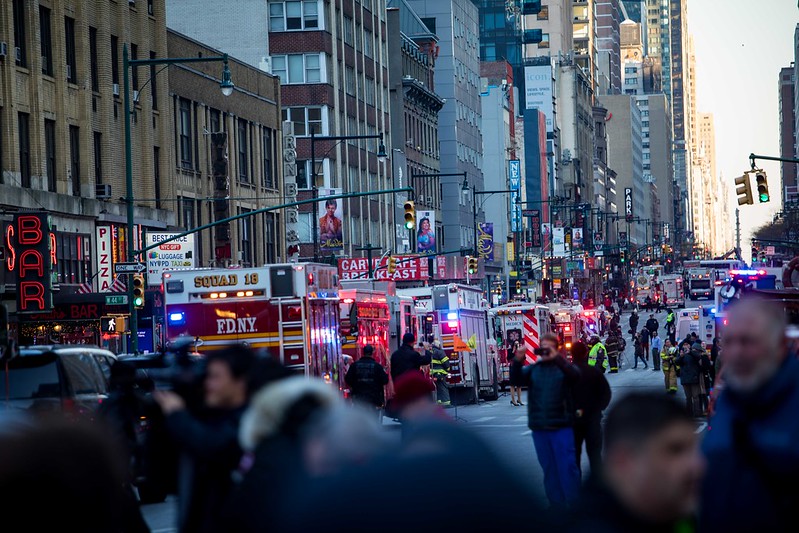
(photo: Benjamin Kanter/Mayoral Photo Office)
While New York’s public health system is doing its best to combat the coronavirus, we need far more assurance from elected officials, especially those involved in our criminal justice system, that they are ready to protect our civil liberties in this emergency. As a civil rights attorney, I know that we must meet this moment with a response that honors public safety, protection from discrimination and price-gouging, civil liberties, and regard for those most marginalized, including people in our jails. We cannot sacrifice our basic values in the name of emergency.
Public health is a matter of public safety, and that is why we must give our health officials the resources they need to fight the coronavirus. But too often in these emergencies, marginalized communities are left behind, whether they are people in NYCHA public housing, homeless shelters, or jails and prisons. This health crisis is also a justice issue.
We must protect vulnerable populations in jail and prison, which are dangerous breeding grounds for a disease like the coronavirus. People are held in close quarters in unsanitary conditions, with medical facilities that are strained under normal circumstances. There is reason to believe a local federal facility is already experiencing issues.
We should explore “medical furloughs” for elderly people being held in our jails and prisons to be removed during the pendency of the outbreak if they have safe places to live in the community. Elderly people in prison with active clemency applications should have those expedited and approved when appropriate. Likewise, we should impose a moratorium on jailing technical parole violators. These individuals, who have broken parole rules (rather than the law), pose virtually no public safety risk, and now is not a good time to crowd jails with them. Consider that Iran has released more than 54,000 people from its prisons to slow the spread of the disease.
We must defend civil liberties, which are always tested in times of crisis. On Monday night, Governor Cuomo pushed through legislation that would confer upon him extraordinary powers to suspend laws and enact new measures to respond to not only this emergency, but events as vague as “storms.” The New York Civil Liberties Union and progressive leaders like State Senator Gustavo Rivera correctly criticized the reckless manner in which this sweeping law was passed. And within our city, should the spread of the virus worsen, we must be very careful about not implementing restrictions on movement that will actually make it harder to fight the disease - such as shutting down forms of transit used by our healthcare workers. On this we can learn from the South Koreans in Daegu, who have promoted transparency and made few impositions on liberty even under a much more severe outbreak.
We must combat price-gouging, especially as hand sanitizer and other products become harder to come by. There is already a law against price-gouging during an emergency, and Senator Brad Hoylman has introduced good legislation that would strengthen it. The law empowers the New York Attorney General to fine culprits, but that will only deter companies if they think they’ll be held accountable. That’s why the city’s District Attorneys and other relevant agencies such as the New York City Department of Consumer Affairs should publicize easy ways to report price-gouging.
We must be vigilant against discrimination. We should follow the lead of Assemblymember Yuh-line Niou and denounce media depictions that promote anti-Asian sentiment. Likewise, we must reject the Trump administration’s castigation of Iranians, Mexicans, and other groups this administration will “other” during the outbreak. If that sounds obvious, remember our city is less than a decade removed from succumbing to right-wing Islamophobia during the “Ground Zero Mosque” controversy, when two-thirds of New Yorkers opposed building a Muslim community center. Should tensions rise, we must be unequivocal: we will not allow discrimination to flourish. This is a global crisis, we are all in this together.
This is a serious moment for our city, and some of our leaders are nowhere to be found. Implementing the right health response will require steady leadership, robust coordination, and aggressive outreach from our government. By honoring values like civil liberty, thinking creatively, and protecting marginalized communities rather than succumbing to fear, New York City can show national leadership in its response, and prove itself ready for more 21st century challenges ahead.
***
Janos Marton is an attorney and a 2021 candidate for Manhattan District Attorney. On Twitter @janosmarton.
***
Have an op-ed idea or submission for Gotham Gazette? Email This email address is being protected from spambots. You need JavaScript enabled to view it.
Fare Evasion Shouldn’t Be a Crime; Neither Should Putting Your Feet Up on the Subway

Policing the subways (photo: Benjamin Kanter/Mayoral Photo Office)
If you’ve ridden the subway recently, you could be forgiven for feeling watched. The MTA’s fare evasion crackdown is ubiquitous; subway cars are plastered with phrases like “We’d rather your $2.75 fare than your $100 fine.” Governor Cuomo’s surge of 500 NYPD and MTA cops has increased police presence in the transit system noticeably. In response, hundreds of people protested in January in Grand Central station, activists jumped turnstiles en masse, and New Yorkers are using social media to alert fellow riders to police presence in subway stations.
The crackdown should concern New Yorkers, because fare evasion enforcement is highly disproportionate. According to the most recent NYPD data, 92% of the 481 fare evasion arrests in the fourth quarter of 2019 were of non-white riders; 60% were black. Data like that led New York Attorney General Letitia James to announce a probe of racial disparities in fare evasion stops. For all this, the MTA is projected to lose money, spending $249M on new officers to recover $200M in fares, though the cops are also said to be for other purposes, like combatting robbery and assault, including on transit workers.
While the fare evasion crackdown is now familiar to straphangers, what might surprise some New Yorkers is that it isn’t just jumping the turnstile or committing more serious crimes that can get you arrested on the subway. Under New York state law, violating the MTA rules of conduct is punishable by up to 10 days imprisonment. As the New York Times has reported, this means that putting your feet up on a seat could land you in jail.
Other offenses include carrying open liquids, walking between train cars, playing music on a stereo, or carrying an animal outside of a container. Getting arrested for taking up an extra seat is probably not something most subway riders worry about, but the infrequent use of these laws does not lessen their serious consequences. For immigrants, a police encounter on the subway could be a first step toward deportation.
Fortunately, there are other ways to protect the transit system’s revenue stream and promote orderly conduct without jeopardizing the personal liberty of riders. In Washington, D.C., the city council voted to decriminalize fare evasion, overriding the mayor’s veto. That does not mean that jumping the fare gate in the capital no longer carries any consequences. Rather, fare evaders are subject to a civil fine of up to $50. What got less attention is that D.C.’s reform also decriminalized smoking, eating, littering, playing music, carrying animals, and more on the Metro. Those offenses too are punishable by a $50 fine. Another model New York could adopt is that of Portland, Oregon, where fare evaders are now granted 90 days to resolve their cases out of court.
Law enforcement in New York City has recognized that fare evasion prosecutions do not advance public safety. In 2017, Manhattan District Attorney Cy Vance announced that he would not prosecute subway fare evasion, unless there is a “demonstrated public safety reason to do so.” That is a good step, which recognizes that public safety resources are best prioritized on other matters. However, it leaves the door open to arbitrary enforcement, still requires offenders to participate in a diversion program, and widens enforcement disparities with the outer boroughs. It also calls into question the rationale for continued fare evasion arrests at all.
Legislators in Albany should follow the lead of these other jurisdictions, and repeal criminal penalties for both fare evasion and violating the MTA rules of conduct. This would not be an invitation to bad behavior, but it would make the punishment for these offenses far more proportionate. New York City has already had great success with this approach in other areas. Under the city’s Criminal Justice Reform Act of 2016, offenses like public urination, carrying open containers of alcohol, violating park rules, littering, and making excessive noise now carry civil, rather than criminal, penalties in most cases. That change resulted in tens of thousands of fewer criminal summonses being issued, and over 644,000 outstanding arrest warrants being dismissed.
If we want to meaningfully reduce mass incarceration, and make our society less punitive, we must not think of the criminal law and incarceration as the only tools to enforce rules. Decriminalizing public order offenses on the transit system would be an important step in that direction. Being poor should not be a crime, either. Fixing the subway cannot just be about improving arrival times, it must also include doing justice for all New Yorkers who rely on it.
***
Sam Rubinstein is a law student at the University of Michigan. On Twitter @Sam_Rubinstein.
***
Have an op-ed idea or submission for Gotham Gazette? Email This email address is being protected from spambots. You need JavaScript enabled to view it.
To Have Truly People-Powered Campaigns, We Need Democracy Vouchers
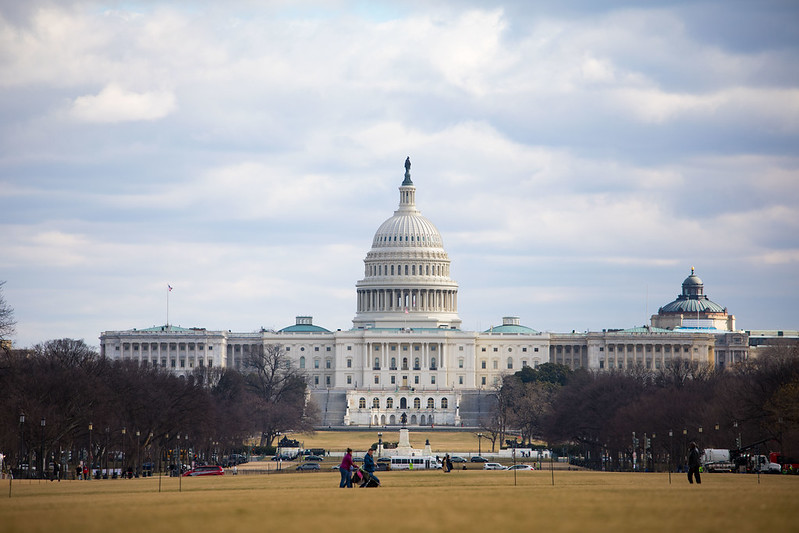
(photo: Benjamin Kanter/Mayoral Photo Office)
We’re just a few months into 2020, and it has been the focus for much of the country for months, if not years, and for good reason -- it is the most important election our democracy has faced in decades. While voter turnout is projected to be record-breaking this year, one of the greatest inequalities of our democracy still needs serious legislative reform: campaign finance.
In 2016, 15% of Americans reported making a political donation, but only 0.52% of the population controlled 67.8% of the total political donations by donating at least $200. Two years later, in 2018, the numbers were worse: 0.47% of the population contributed at least $200 to a campaign, but totaled 71% of all political donations.
Up and down the ballot, more and more candidates are making voluntary pledges to reject corporate PAC money and donations from special interest groups. Several Democratic presidential primary candidates are breaking records with their number of small-dollar donors. But these are voluntary pledges and candidates down the ballot will never be able to match the energy surrounding a presidential campaign.
Although we come from different backgrounds, we have both worked to serve our communities and have run for office against machine-backed candidates. As we can both attest, raising enough money to take on the establishment is hard and we have seen firsthand the impact of corporate money in campaigns -- and the power in the movement to remove special interest money from politics altogether.
It will take legislative change to elevate the value of small-dollar donors and fully get special interest money out of politics.
The most exciting idea, a proposal with potentially transformative effects, is Democracy Vouchers at the federal level. Democracy Vouchers are a simple concept - jurisdictions grant voters vouchers of a select dollar amount that they can donate to the candidates of their choice, as long as the candidates vow to meet certain contribution limits.
For example, every voter in America could get $50 under legislation proposed by Rep. Ro Khanna. They could only use that $50 on federal elections. People know that money matters in campaigns, and because of that, they feel (more) shut out.
Democracy Vouchers have proven to be effective — Seattle voted to implement Democracy Vouchers in 2015 and then piloted its program in 2017. The initial impact of the voucher program included doubling the percentage of giving coming from people under the age of 25 and an increase in people of color making donations. The time for Democracy Vouchers to be more widely implemented has come.
Their ability to empower people to become further engaged in the political process is tremendously important, especially in low-income areas. For too long, candidates, especially challengers, running in low-income areas have had to fundraise outside their communities to run viable campaigns — necessarily giving outsiders the power to decide what matters most and protecting incumbents. Democracy Vouchers would serve as an equalizer for all donors and create greater opportunity for low-income communities to donate to the candidates they believe in.
If we are going to continue the progress we made in 2018 to create the most diverse Congress in history, we must find ways to level the playing field so that more candidates, including women and people of color, are empowered to run. If we are truly going to rid special interests from politics, we must institute public campaign financing through Democracy Vouchers at the federal level and hold leaders accountable for letting corporations -- not people -- dictate their leadership.
***
Adem Bunkedekko is a candidate for Congress in New York’s 9th District, covering parts of Brooklyn. Zephyr Teachout is a law professor. On Twitter @ZephyrTeachout & @adembunkeddeko.
***
Have an op-ed idea or submission for Gotham Gazette? Email This email address is being protected from spambots. You need JavaScript enabled to view it.
Is Cuomo Serious About Addressing Climate Change? Indian Point Decision Says No

Indian Point (photo: the governor's office)
Governor Andrew Cuomo claims that New York is a leader in addressing the dangers of climate change. So far, the facts fail to support this.
Since 2010, New York’s gas-fired and dual-use (gas & oil) electric capacity has increased over four times as fast as wind plus other sources of renewable power. Fossil fuels today produce eight times as much electricity as all our renewables, exclusive of hydropower. This movement towards greater fossil fuel use is about to get far worse if the carbon-free Indian Point nuclear plant is shut down and replaced by natural gas.
The Climate Leadership and Community Protection Act (CLCPA), signed by the governor in July, commits New York to eliminate the burning of fossil fuels for electricity by 2040. Tragically, long before 2040, all the hoped-for benefits of the CLCPA will be negated. In just a few weeks, Unit 2 of the Indian Point nuclear power plant in Westchester is scheduled to shut down, to be replaced by gas-fired power that will release 3.5 million metric tons of carbon dioxide into the atmosphere each year.
Next year Unit 3 will shut down, adding a similar amount of greenhouse gases to the atmosphere each year thereafter. At that rate, the “world’s largest off-shore wind farm” that the governor hopes to build off of Long Island will not show any net environmental benefit for at least 20 years. We can’t wait that long to deal with climate change.
Further, in spite of CLCPA declarations and over the objections of many citizens, the Cuomo administration recently approved an increase in electric rates to enable Con Edison to expand its use of natural gas. Earlier, the state authorized the construction and operation of several new natural gas-burning plants, including a very large gas plant in Dutchess County due to open in May.
Most inexplicably and disastrously, the Cuomo administration has agreed to shut down the Indian Point plant in Westchester County. Its safe and reliable power is the largest clean source of electricity in the downstate region, providing fully 80% of our carbon-free power. Indian Point’s closure will set back New York’s climate plans for decades. What is going on here?
In many parts of the country, nuclear plants, the nation’s major source of carbon-free power, are threatened with closure by competition from lower-cost natural gas. Here in New York, nuclear power provides 32% of our electricity and over half our carbon-free energy (hydropower supplies most of the rest). The governor supports subsidizing upstate nuclear plants that provide clean energy, jobs, and tax revenue, but he has refused to provide similar support for the Indian Point plant, even though it supplies 25% of the Metro region’s electricity as well as many jobs and local tax revenue. It appears that he has been misled by fear-mongering false claims like the need for massive evacuations and other myths. The scientific community has debunked all these myths, but state leadership is unmoved.
When the governor announced the closure agreement, he told the people of New York that replacement power would add no new carbon to the atmosphere. This commitment will not be met if Indian Point is replaced by gas. Worse, present gas pipeline and power plant limitations may require that the dirtiest gas plants in New York City are pressed into service. Many of these polluting plants are located in low-income environmental justice areas. Pollutants that worsen asthma and other ailments will assail the residents of these communities.
Achieving a low-carbon future will require vast increases in clean electricity production, and all renewable sources are challenged. Hydropower cannot be expanded very much at all. Land-based wind power accounts for just 3% of the state’s electricity output today, and no new wind installations are currently under construction.
Even with the planned expansion of New York’s transmission system, only limited amounts of upstate wind power can be brought to the downstate region. The planned off-shore wind farm will just begin to bring some electricity to New York City by 2028, if it proceeds on schedule. However, this enormous project will have to be accompanied by giant banks of storage batteries if it is to supply reliable electricity to the Metro area when the wind isn’t blowing.
Solar energy provides just 1.6% of the state’s electric output today. The state government’s climate plan requires that solar energy produce more than 30% of our electric output by 2030, but at the current rate at which solar panels are being installed, this goal won’t be reached for 100 years. A recent comprehensive report from the Citizens Budget Commission, an influential think tank, found that the projected expansion of solar and wind was “likely infeasible.” It seems clear that the state lacks a workable plan to provide the growing amount of carbon-free electricity we will need to address the climate crisis.
Nuclear energy has shown, over the last 60 years, that it can provide large quantities of safe and reliable electric power. Its costs are high, but advanced designs and more efficient manufacturing methods can bring these down. These advanced designs are capable of producing electricity where and when it is needed.
As a start, there is no need to shut down Indian Point. This facility has been running safely and reliably for nearly 50 years, and it could keep going for many more. The governor’s closure agreement wisely allows Unit 2 to continue operating until 2024 and Unit 3 a year longer. Further, major issues have recently arisen with the decommissioning of these plants that will need more time to be sorted out. We should use this closure agreement to its fullest and extend operations four more years.
While the state develops a new, realistic energy plan using all its carbon-free resources, it should not shutter the Indian Point nuclear plant.
***
Leonard Rodberg is a physicist who taught climate change and public policy at Queens College/CUNY until his retirement in 2017. Herschel Specter is an engineer who focused on nuclear safety issues in many positions, including at the Nuclear Regulatory Commission and the International Atomic Energy Agency.
***
Have an op-ed idea or submission for Gotham Gazette? Email This email address is being protected from spambots. You need JavaScript enabled to view it.
Lessons for the New York Primary from Sanders’ Nevada Blowout
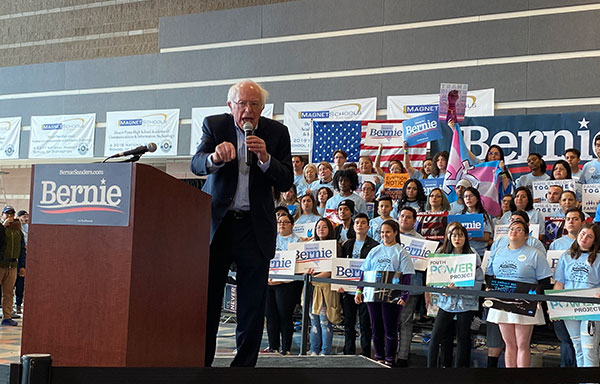
Bernie Sanders & Make the Road Action in Nevada (photo: Make The Road)
People across the country were stunned by Bernie Sanders’ 28-point victory in the Nevada caucuses. Not our members. Why? From Make the Road Action’s on-the-ground work mobilizing Latino voters and other voters of color in East Las Vegas, it was clear that the Sanders campaign had overwhelming support in our communities. The Latino vote was his secret weapon.
And looking forward, Sanders’ performance in Nevada, where 30% of the population is Latino, and people of color are the majority of the population, has important implications for future primaries closer to home -- like in New York, where 18% of the state’s population is Latino and people of color make up more than 40% of the population.
Over the past two months, our members in Las Vegas had a front-row seat to observe the Sanders campaign’s dominant ground game in Latino communities and other communities of color. The campaign prioritized hiring a diverse staff with deep community connections, and investing real resources—dollars and staff time, not lip service—into organizing these communities. While other campaigns relied primarily on the airwaves, the Sanders campaign, through a robust precinct-by-precinct outreach strategy and culturally-relevant event series like “Tamales con Tio Bernie,” showed a clear focus on in-person organizing.
The campaign also showed a deep commitment to grassroots partnerships and the synergies they bring. Since early last year, the Sanders campaign engaged community organizations like Make the Road Action and our members, asking for input on policy platforms and organizing strategy.
When our members ultimately chose to endorse Sanders, the campaign also worked to make us an integral part of the campaign. When Senator Sanders held a rally in Las Vegas on the first day of early voting, four of our members spoke first—sharing their experiences of fighting for affordable housing and against unjust immigration policies in Las Vegas. When we marched to an early caucus site right after, Sanders marched with us.
The campaign’s commitment to community partnership yielded concrete results. Our Nevada members were so energized that our team ultimately knocked on 10,000 doors and made more than 30,000 phone calls to engage Latino voters and other voters of color across East Las Vegas. We also reached millions of people nationwide via social media with original, bilingual content highlighting our support for Sanders.
On caucus day, we saw the fruits of that labor. Statewide, entrance polls showed Sanders winning a clear majority of Latino votes—a remarkable feat given that there were 11 names on the ballot. At the dozens of precincts across East Las Vegas that we covered, Sanders won overwhelmingly, with community members reporting to us that they had received visits at their doors from the campaign and from Make the Road Action. When one of our poll-site interpreters asked an older Latina voter for whom she was voting, she went into her purse, pulled out a Make the Road Action flyer, pointed to Sanders' face, and said: "I'm voting for him."
The Nevada results have clear implications for states like New York, with large Latino populations and many voters of color. Here, too, we can already see the strength of the Sanders ground game, with an all-volunteer statewide infrastructure collecting 65,000 petition signatures to get him on the New York ballot.
And, as in Nevada, our black and Latino members in New York, alongside progressive elected officials—like Alexandria Ocasio-Cortez, Jumaane Williams, Jessica Ramos, Julia Salazar, Ron Kim, Mike Gianaris, and others—and partner organizations like Democratic Socialists of America and New York Progressive Action are already energized and organizing for the April primary.
Those efforts have begun to bear fruit, with a new Siena poll this week showing Sanders in the lead in the Empire State for the first time in this contest, and with a solid lead among Latino voters.
With the strongest organizing infrastructure in the primary field and robust community partnerships, the Sanders campaign can count on trusted messengers to deliver votes across diverse communities. As we look to Super Tuesday and then on to New York’s primary in late April, expect that infrastructure to pay off.
***
Lalo Montoya and Deborah Axt are, respectively, the Nevada Political Director and the Co-Executive Director of Make the Road Action. On Twitter: @LaLoMontoya5, @DebAxt & @MaketheRoadAct.
***
Have an op-ed idea or submission for Gotham Gazette? Email This email address is being protected from spambots. You need JavaScript enabled to view it.
Far Too Many Classrooms are Overcrowded, It’s Time for City Leaders to Act
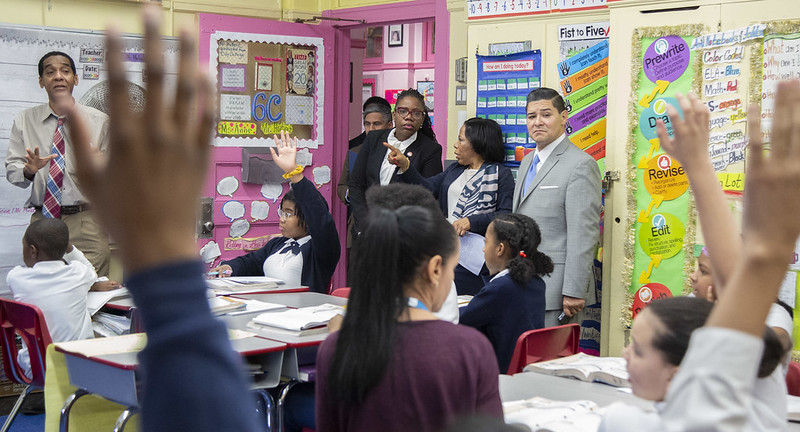
DOE Chancellor Richard Carranza visits a classroom (photo: John McCarten/City Council)
In the Campaign for Fiscal Equity case, the state’s Court of Appeals concluded in 2003 that class sizes were too large in New York City schools to provide our students with their constitutional right to a sound basic education, writing that “[T]ens of thousands of students are placed in overcrowded classrooms… The number of children in these straits is large enough to represent a systemic failure.”
And yet despite this decision, and the fact that when Bill de Blasio promised that, if elected mayor, he would lower class sizes in all grades to far lower levels, class sizes have stagnated during his time in office and remain on average 15-30 percent larger than in the rest of the state. In the early grades, they are substantially larger (by 10 percent) than in 2003 when that CFE decision was issued. More than 325,000 students are in classes of 30 or more this year. Let that number sink in.
The research on the benefits of class size is clear, especially for children in the early grades. Project STAR, a large-scale experiment carried out in Tennessee in the 1980s, showed that those students who were randomly placed in smaller classes in K-3 did better in every single way that could be measured. They earned better grades, better test scores, and were less likely to be held back and less likely to have disciplinary problems.
After they reached high school, they were more likely to graduate on time, head for college and graduate with a STEM degree, and own their own home more than 20 years later.
Though no large-scale experiment of a similar kind has been done on class size in the middle and upper grades, there are many studies that show a strong correlation between smaller classes in these grades and students earning better test scores, exhibiting improved non-cognitive skills, and having higher graduation rates, while controlling for other observable factors.
Most importantly, all these gains that result from smaller classes are twice as large for disadvantaged students and students of color, who make up the majority of kids in the New York City public schools. That is why class size reduction is one of only a handful of reforms proven to narrow the achievement and opportunity gap.
Since Mayor de Blasio took office, test score levels have been flat or declining, as measured on the national exams called the NAEPs, the most reliable assessments. And the gap in results between students of different economic and racial groups has widened.
None of this is particularly surprising of course.
In smaller classes, all students, but especially those who are struggling, have their academic and social-emotional needs better met, are able to receive more feedback from their teachers, and feel like their teachers care about them more. This motivates them to show effort and stay on track. It is the personal, human connection that inspires them to learn.
What’s sad is how many New York City teachers say they don’t even have time to answer all their students’ questions because their classes are too large. As a result, too many students are confused and lose interest, become passive and disengaged, or act out in order to obtain the attention they crave.
This is why New York City teachers overwhelmingly say that class size reduction would be the best way to improve our schools, and why New York City parents put smaller classes among their top priorities every year on Department of Education surveys. Most principals agree – and believe that to be able to provide a quality education, class sizes should be no more than 20 students per class in grades K-3, 23 in grades 4-5, and 24 in all other grades.
Schools Chancellor Richard Carranza is the first DOE Chancellor in many years who, when asked, admits that he realizes how important class size is. As a teacher, he says, he knew that he could reach his students better in a class of 24 than 30. And yet when questioned by the City Council at hearings or by parents at town hall meetings what he intends to do about it, his response is almost exactly the same as previous chancellors who had little or no interest in reducing class size: He will wait until the state provides more Foundation Aid funding and then he will allow principals do what they want with the extra funding. This is not an acceptable answer. Why?
First, New York City students should not have to wait for the state to fully fund Foundation Aid, when hundreds of millions of dollars are being spent by the Department of Education on less effective, unproven programs and other expenses — including a substantial increase in bureaucracy and more standardized testing — and the city continues to enjoy a surplus.
Second, the “Fair Student Funding” system, into which the additional Foundation Aid would flow, incentivizes principals to keep class sizes as large as possible, because their funding is tied to the number of students they enroll.
Lastly, class size reduction won’t happen in any systematic and rational fashion unless the New York City Department of Education has a plan to make it happen, by providing the staff and the space where it’s most needed, as they did when they expanded pre-kindergarten programs.
That’s why we are calling on the Mayor and the City Council to step up to the plate, and allocate $100 million in next year’s budget to be allocated specifically towards class size reduction, starting first in the early grades and in struggling schools.
This amount represents less than .3 percent of DOE’s total budget of $34 billion. It would represent the first step in a necessary process of beginning to provide New York City children with the truly equitable and excellent education they deserve, and which parents and educators have long known is badly needed for our schools to succeed.
***
Leonie Haimson is the Executive Director of Class Size Matters. On Twitter @leoniehaimson.
***
Have an op-ed idea or submission for Gotham Gazette? Email This email address is being protected from spambots. You need JavaScript enabled to view it.
Let's Legalize Surrogacy In New York The Right Way
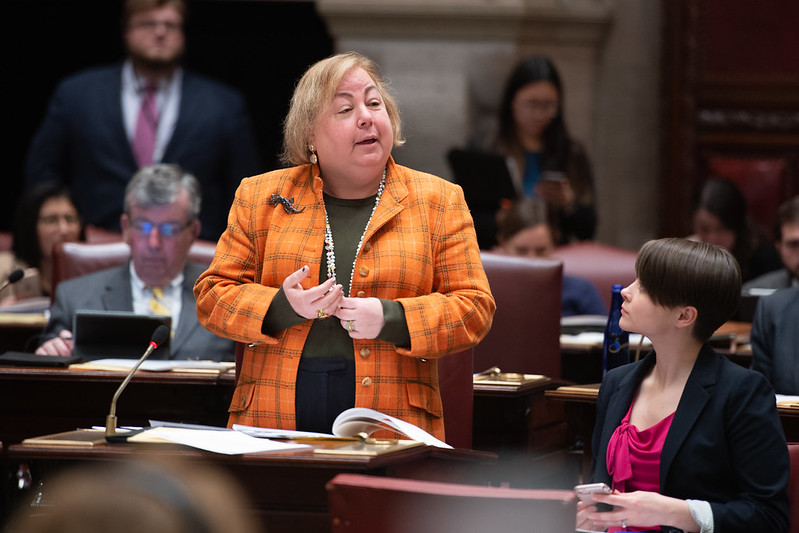
State Senator Liz Krueger, the author (photo: NY Senate)
Advances in assisted reproductive technology (ART), including intrauterine insemination (IUI), in vitro fertilization (IVF), egg and sperm donation, and surrogacy, have created remarkable new family-building options in the last several decades. As someone who is unable to have my own biological children, I support New Yorkers being able to use ART, including surrogacy, to build the families they want.
Yet these relatively new technologies bring with them complex issues that must be considered carefully. After many discussions with my colleagues who support existing proposals to legalize and regulate paid surrogacy in New York, as well as experts and advocates, I believe those proposals do not do enough to balance and protect the health, safety, interests, and rights of all parties involved.
At the same time, in spite of the fact that paid gestational and genetic surrogacy are currently illegal, the ART, gamete donation, and surrogacy industries are already operating in New York, with insufficient regulation and protections. That is why I have introduced an alternative bill, along with Assemblymembers Didi Barrett and Danny O’Donnell, to tighten regulations on gamete donation and to legalize surrogacy with appropriate safeguards.
Our bill goes further than existing proposals in creating consumer protections, ensuring that participants are fully informed of health risks and other relevant factors, preventing exploitation, power imbalances, and inequitable treatment, requiring the use of best medical practices to protect the health and wellbeing of all parties, and information-gathering to facilitate much-needed research and tracking.
Intended parents, people acting as surrogates, egg and sperm donors, and of course any children that are conceived by assisted reproduction or born through surrogacy, are all intimately invested in the process and outcomes of any gamete donation or surrogacy agreement. For intended parents who decide to use surrogacy, they spend a significant amount of money, take time to carefully choose a person who will bear their child, and place their hopes in the person acting as surrogate.
Surrogates take on significant risks to their health, and in some cases their lives. They place their trust in the intended parents to adhere to the surrogacy agreement, and to provide a good home for the children they have spent nine months growing and nurturing inside their own body.
Children born through surrogacy or using ART have a right to have their needs and interests considered throughout the process, and to access data and research that are sorely lacking today on the health impacts of using certain forms of ART.
Our bill strengthens the existing proposals through several new or tightened provisions, including:
Evaluating intended parents and people acting as surrogates to assess eligibility.
Minimizing health risks for surrogate by establishing age restrictions, requirements relating to prior pregnancies and births, and preclusions on preexisting medical and psychological conditions that would make the pregnancy high-risk.
In order to prevent human trafficking, requiring intended parents and surrogates to be U.S. citizens or permanent lawful residents, and New York State residents for at least 12 months prior to executing an agreement.
Explicitly requiring more comprehensive, longer-lasting health, life, and disability insurance be provided to the surrogate.
Recognizing and protecting the human agency of the surrogate by allowing them to terminate the agreement at any time during the pregnancy. If this happens, the surrogate must return any financial compensation already received other than payment for medical, legal, and pregnancy-related expenses.
Creating a window after the birth of a child during which, in rare and extreme circumstances, the person acting as surrogate could ask a court to step in and determine legal parentage.
I believe that these measures, and several others addressing not only surrogacy but an array of assisted reproduction technologies, are necessary to balance the needs and interests of all the people engaged in gamete donation or surrogacy agreements. I hope that my colleagues in the Legislature, and Governor Cuomo, will take the time – after the new state budget is passed – to thoroughly consider and discuss all of the options on the table. Fundamental issues of equity, family, health, and people’s lives are at stake.
***
State Senator Liz Krueger is a Democrat representing parts of Manhattan. On Twitter @LizKrueger.
***
Have an op-ed idea or submission for Gotham Gazette? Email This email address is being protected from spambots. You need JavaScript enabled to view it.
Attorney General Disrupts Progress on Taxi Loan Crisis
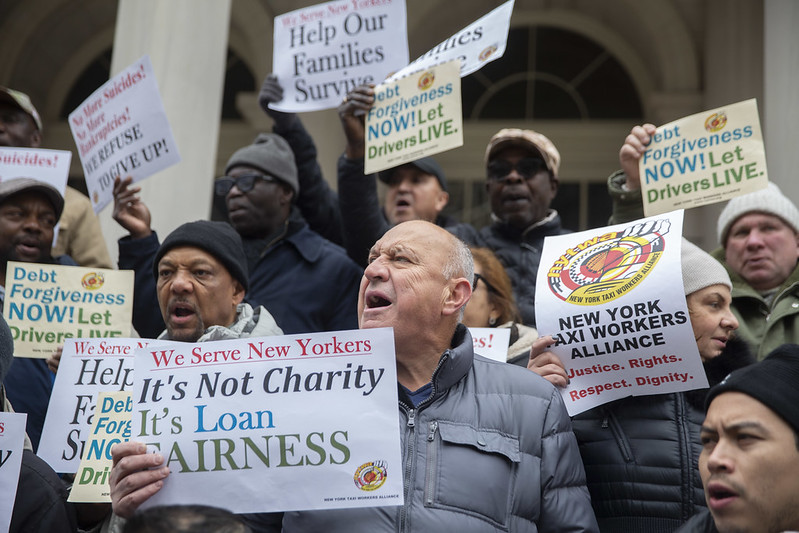
Taxi driver-owners protest at City Hall (photo: John McCarten/City Council)
Last May I wrote a column criticizing the practice of including taxi medallion sales revenue in the city’s operating budget and pointed out the perverse incentive it creates to encourage high sales prices. My comments were triggered by the publication of a compelling investigative series on the New York City taxi medallion market in the New York Times.
The series provoked outrage from elected officials, several of whom launched investigations and studies of their own. The City Council appointed a task force, which recently came up with thoughtful recommendations; but the state’s attorney general has thrown a wrench into efforts to responsibly help needy taxi medallion owners by threatening to sue the city to give all their money back to everyone who bought medallions during the ten-year period when prices rose and then fell so dramatically.
It is heartbreaking to hear the stories of taxi drivers, many of them immigrants, who thought that ownership of a taxi medallion was a ticket to the American dream, only to see their value plummet as an onslaught of ride-hailing vehicles flooded city streets. But the challenge is how to help these driver-owners in a way that is appropriate and fiscally responsible.
In the early 2000s when the city’s economy was doing well and the ceiling on the number of medallions made them a scarce resource, it made sense that they were extremely valuable. Yes, the New York City Taxi and Limousine Commission (and city’s budget office, which counted on medallion sales revenue to help balance the budget) encouraged -- or at best, did not try to mitigate – the rapid growth in medallion prices from 2004-2014, but market conditions were the primary cause.
In retrospect it looks crazy that prices rose as high as they did, but no one wanted to cast a skeptical eye (except Citizens Budget Commission and other fiscal monitors, of course) on a business that could empower hard-working people to prosper. No one anticipated the rapid and dramatic creation and growth of Uber, Lyft, and other ride-hailing services that have overwhelmed city streets with cars and left taxi drivers scrambling for passengers and income.
After the Times series the City Council created a Taxi Medallion Task Force that issued its report last month, recommending that the city form an entity to purchase outstanding medallion loans at discounted prices and work with borrowers to pay them back over time. The report recognizes that it is not feasible for the city itself to fully buy the loans, although it states that costly city-sponsored loan insurance might be necessary to make the fund viable. What is proposed is a kind of public-private partnership in which “mission-driven” entities such as socially responsible investors and philanthropies contribute to a pool of funds. While Mayor de Blasio has not endorsed this specific recommendation he has said this is the best solution he has heard to the problem so far.
However, before there has been any time for this approach to be refined and pursued, along comes New York Attorney General Letitia James with a plan that would be more straightforward and far more costly to execute: sue the city and make it pay back all the $800 million-plus it has collected for medallion sales since 2004. A notice has been filed with the City Comptroller giving the city 30 days to resolve the claim before a lawsuit is filed.
The threat of this litigation casts a pall over other attempts to help underwater taxi medallion owners by getting their lenders to accept discounted amounts. Why would anyone agree to take less money when there is now the prospect that the city will pay the full amount borrowed? Why would financial institutions and other lenders participate in the City Council’s plan to create a fund for this purpose if the need is obviated by the AG’s lawsuit?
While AG James is undoubtedly trying to help struggling individual driver-owners, it is primarily professional industry lenders and fleet owners who would benefit from her claim. And it would unfairly hold New York City government responsible for a problem that has multiple layers and causes.
Most important, the AG’s litigation would set an extremely dangerous and expensive precedent that taxpayer dollars can and should be used to bail out an entire line of business that has hit hard times. (It is unclear how the lawsuit would impact negotiations to reduce the amount due on several thousand medallion loans just purchased from the National Credit Union Administration by a hedge fund, Marblegate Capital.)
Can the city be expected to pay off the loans of restaurateurs who must close because of new minimum wage and other regulatory requirements? What about the mortgages of homeowners who may face more difficulty paying them off if and when property tax reforms are adopted? By the way, when the Attorney General was a City Council member she voted to approve the budgets that included the revenue from medallion sales; does that make her culpable too?
The city has no choice but to resist the AG’s attempt to be the taxi industry hero at everyone else’s expense and the City Council should join the mayor in denouncing the lawsuit.
Meanwhile, even if the city successfully facilitates a loan fund, still left unresolved is how to keep medallions financially viable over the long-term. What is needed is a coherent plan of reforms and new policies to make the system of taxis and for-hire vehicles in New York City functional going forward.
***
Carol Kellermann was president of Citizens Budget Commission from 2008 through 2018.
***
Have an op-ed idea or submission for Gotham Gazette? Email This email address is being protected from spambots. You need JavaScript enabled to view it.




